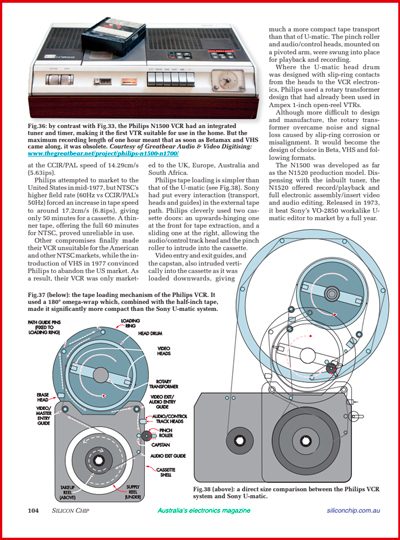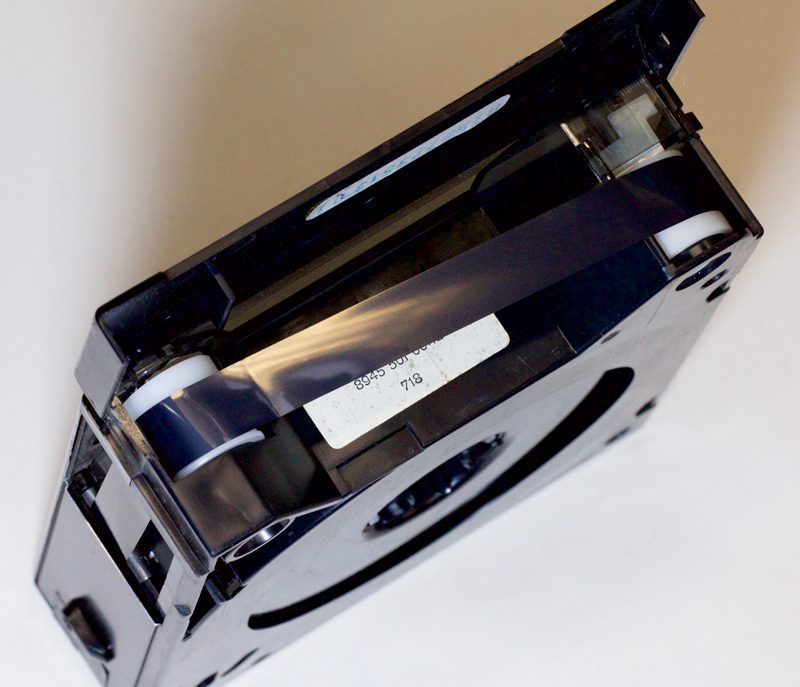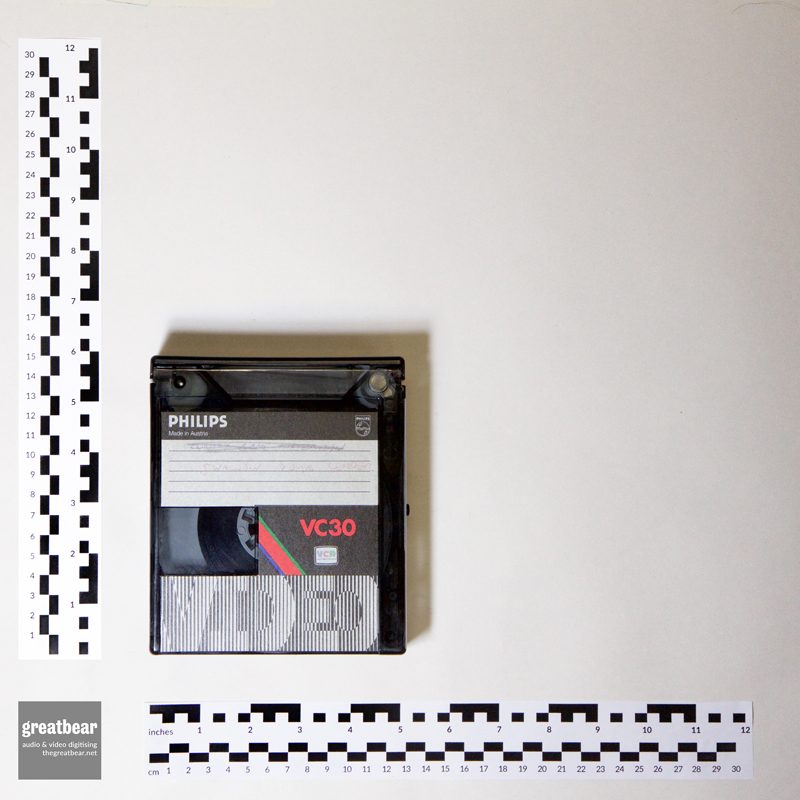
Graphic design for Philips VC-45 and VC-30 VCR tape boxes in the Greatbear collection
For thegreatbear.co.uk, I get to photograph and document racks and racks of beautiful 'obsolete' tape machines in the Greatbear studio. From time to time pictures of our machines pop up elsewhere online (I'm convinced our machines are the best-looking on the internet), and this month one of our Philips N1500 VCRs is featured in Australian electronics magazine Silicon Chip (May 2021).
The siliconchip.com.au article describes Philips' development of VCR: the first cassette-based video tape recording system designed for domestic use, following the success of their revolutionary Compact Cassette audio tapes, recorders and players (1962 onwards). This is set in the context of U-matic, the Panasonic Video Cartridge, Betamax and VHS.
The article is part 3 of a well-researched and illustrated feature series on The History of Video Tape. Scroll down for a text extract from the article - we recommend subscribing to the whole series.
"Philips [had] entered the domestic open-reel market with half-inch VTRs beginning with their 1969 release of the desktop LDL-1000. Although easy to use, it lacked a tuner, forcing users to have existing TV receivers modified to supply video and audio signals for the VTR. Such modified sets were known as receiver monitors.
The LDL-1000 achieved some success, but recalling the success of their audio Compact Cassette system (siliconchip.com.au July 2018), Philips began development of a cassette system for video recording.
Their N1500, released in 1972 (just one year after Sony’s U-matic), offered an integrated design. Containing a tuner and a timer and able to supply a standard television signal output, the N1500 hit the spot with consumers, except for the problem of tape length. The N1500 can claim to be the world’s first domestic VCR (video cassette recorder).
Philips’ VCR system mechanism, like their compact cassette mechanism, was offered royalty-free to manufacturers who agreed to maintain the design standard and use the VCR logo. You can see a video of a VCR tape loading at https://youtu.be/9-Bw8m65mVY
The VCR cassette stacked the supply and [take-up]reels above each other in a coaxial design. At only 125 x 145 x 40mm, it was much more compact than the standard U-matic cassette.
Its width (under 60% that of U-matic) helped moderate the size of the entire tape drive mechanism. While this elegant solution offered a genuinely compact medium, the complexity of its threading mechanism meant that its reliability was only fair.
Using a half-inch tape with a conventional 180° degree omega wrap, the Philips VCR was able to offer 60-minute record/play times at the CCIR/PAL speed of 14.29cm/s (5.63ips).
Philips attempted to market to the United States in mid-1977, but NTSC’s higher field rate (60Hz vs CCIR/PAL’s 50Hz) forced an increase in tape speed to around 17.2cm/s (6.8ips), giving only 50 minutes for a cassette. A thinner tape, offering the full 60 minutes for NTSC, proved unreliable in use.
Other compromises finally made their VCR unsuitable for the American and other NTSC markets, while the introduction of VHS in 1977 convinced Philips to abandon the US market. As a result, their VCR was only marketed to the UK, Europe, Australia and South Africa.
Philips tape loading is simpler than that of the U-matic. Sony had put every interaction (transport, heads and guides) in the external tape path. Philips cleverly used two cassette doors: an upwards-hinging one at the front for tape extraction, and a sliding one at the right, allowing the audio/control track head and the pinch roller to intrude into the cassette.
Video entry and exit guides, and the capstan, also intruded vertically into the cassette as it was loaded downwards, giving much a more compact tape transport than that of U-matic. The pinch roller and audio/control heads, mounted on a pivoted arm, were swung into place for playback and recording.
Where the U-matic head drum was designed with slip-ring contacts from the heads to the VCR electronics, Philips used a rotary transformer design that had already been used in Ampex 1-inch open-reel VTRs. Although more difficult to design and manufacture, the rotary transformer overcame noise and signal loss caused by slip-ring corrosion or misalignment. It would become the design of choice in Beta, VHS and following formats.
The N1500 was developed as far as the N1520 production model. Dispensing with the inbuilt tuner, the N1520 offered record/playback and full electronic assembly/insert video and audio editing. Released in 1973, it beat Sony’s VO-2850 workalike U-matic editor to market by a full year.
Regrettably, the Philips VCR format suffered from unreliable tape loading/handling, and that dreaded one-hour time limit.
Philips did develop a long-play VCR, the N1700 series, by halving the tape speed. Not released until 1977, when the Sony-JVC/Beta-VHS melee was well underway, the Philips VCR lapsed into obscurity. "
.................................................................
Extract from The History of Videotape – part 3 Cassette Systems by Ian Batty, Andre Switzer & Rod Humphris, Silicon Chip, May 2021





